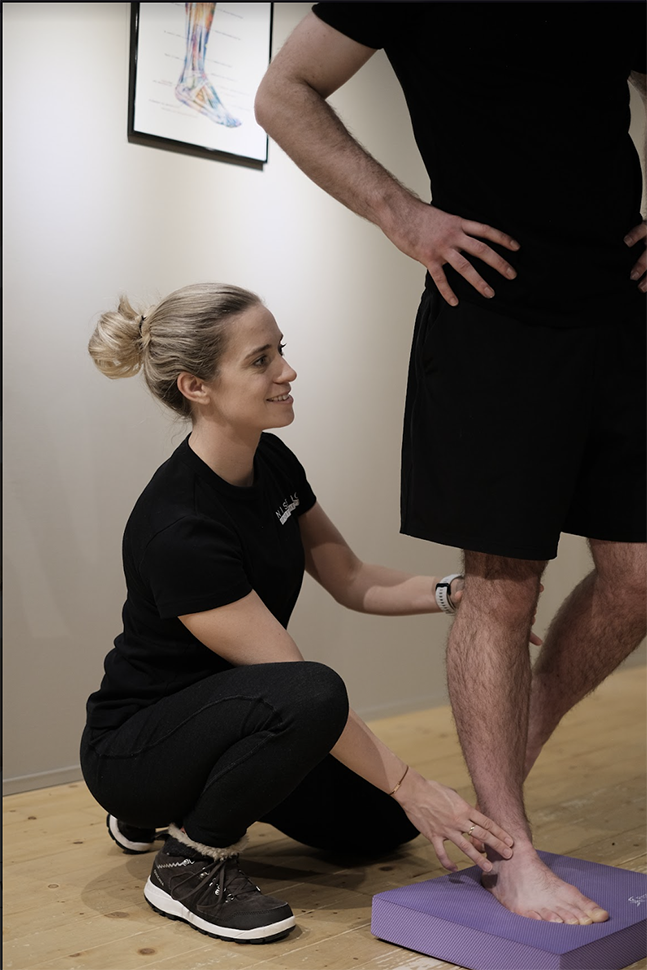NOMAD WELLNESS NISEKO | 070 9090 8183 | info@nomadwellnessniseko.com
Meniscus injuries
The menisci are C-shaped wedges of cartilage located in the knee joint between the femur and tibia. Each knee has two menisci – the medial meniscus (inner) and the lateral meniscus (outer). Their primary functions include load distribution, shock absorption, joint stability, and lubrication of the knee joint.
Mechanism of Injury
Meniscus injuries often occur due to twisting or rotational movements of the knee, which can happen during sports activities, including skiing and snowboarding. The mechanism involves a combination of compression and rotation, leading to tearing or damage of the meniscus. Additionally, direct trauma or degenerative changes over time can contribute to meniscus injuries.
Meniscus Injuries in Skiing and Snowboarding
Skiing and snowboarding involve dynamic movements, jumps, and quick changes in direction, all of which can put stress on the knee joint. Twisting motions while skiing or the impact of a fall during snowboarding can contribute to meniscus injuries. Skiers are more prone to this due to the fixed position of the ski boot, making the lower leg susceptible to rotational forces.
Symptoms of Meniscus Injuries:
- Pain: Especially palpation along the joint line.
- Swelling: Due to inflammation.
- Stiffness: Difficulty fully bending or straightening the knee.
- Catching or Locking: Sensation of the knee getting stuck.

Treatment
- P.O.L.I.C.E Protocol: Protect (brace), Optimal Loading, Ice, Compress, Elevate Initially, rest and ice can help reduce pain and inflammation. Depending on the severity of the injury, patient will need to either be partial or fully non-weight bearing (crutches)
- Physical Therapy: Targeted exercises to strengthen surrounding muscles and improve joint stability.
- Anti-Inflammatory Medications: To manage pain and inflammation prescribed by a health professional.
- Bracing: Depending on the severity, a brace may be recommended for support.
- Surgery: In cases of severe tears or persistent symptoms, arthroscopic surgery may be considered to repair or trim the damaged meniscus.

Rehabilitation for Skiers and Snowboarders
Physiotherapy plays a crucial role in the rehabilitation of meniscus injuries in individuals involved in skiing or snowboarding. The rehabilitation program may include:
- Strengthening Exercises: Emphasizing quadriceps, hamstrings, and hip muscles to enhance joint stability.
- Balance and Proprioception Training: Improving coordination and reducing the risk of re-injury.
- Range of Motion Exercises: Restoring normal knee joint mobility
- Sport-Specific Training: Tailored exercises to mimic the demands of skiing or snowboarding.
After surgical treatment, a structured rehabilitation program is essential for optimal recovery.
Physical Therapy: A tailored rehabilitation program focusing on regaining strength, flexibility, and function. This includes exercises to promote healing and prevent muscle atrophy. This is vital for regaining full function and returning to your previous level of sport. Ask your physiotherapist for details on timeframe and stages as it depends on the surgery. Meniscus repairs tend to take a bit longer, as the patient needs to remain non-weight bearing (NWB) and cannot flex (bend the knee more than 90 degrees, for up to 4 weeks after surgery.
